Categories: Featured Articles » Electrician Secrets
Number of views: 322231
Comments on the article: 89
Which wire connection is more reliable - Wago clamps or twisting? Real test history
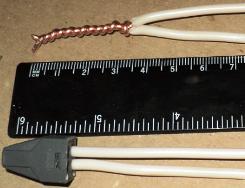 We all know, torn where thin. The same is true in the electric circuit - in emergency conditions, the breakage occurs primarily at the junction of the wires, and not in the wire itself.
We all know, torn where thin. The same is true in the electric circuit - in emergency conditions, the breakage occurs primarily at the junction of the wires, and not in the wire itself.
This happens due to the appearance of transition resistance at the junction of the wires, therefore, the better the contact, the lower the transition resistance, the more reliable the electrical circuit.
In home wiring, probably in 90% of cases, connections were made before twisted wires followed by soldering or welding, but often just like that.
Sometimes used and bolted connections, terminal clamps. But science does not stand still and here to help electricians were invented self-locking terminals, now they are also called Wago clamps.
It has become easier to work, more fun, when you disconnect in the distribution box, know that you have time to insert the wires into the clamps, everything is very simple - I inserted and forgot. No need to remove a lot of insulation from the wire, 10-12mm is enough, no need to twist the wires, insulate.
The only minus is the inability to connect Wago clamps to flexible wires.
Why is twisting worse? Is she really so bad and loses in all respects to the Vagov clamp? I was somehow offended by her, especially when you read on the forums - “Twisting is illegal!”, Or “Twisting is used only by amateurs, this is the last century!” etc.
So I don’t consider myself an amateur, and I made many connections with twists - with and without welding, and I think that competent made twisting is no worse than modern wago clamps.
I decided to test these two compounds and find out how they behave under different operating modes - nominal, maximum operation and emergency mode - a strong current overload of the wire.
I took four pieces of copper wire with a cross-section of 2.5 squares, two of them connected by twisting, the other two with a Vagovsky clamp, purchased in a store and intended for this section of wires.
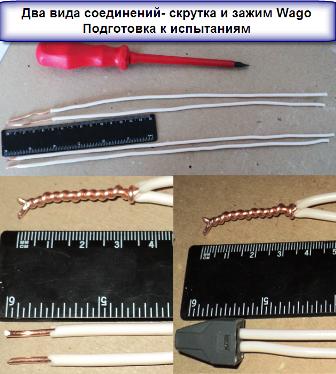
Previously, I already “tried” the Wagowski clamp and tried to measure the transition resistance parameters. I could not measure the resistance, because I did not find the device, a microohmmeter is required here.
Then I began to reason like this: if there is a transition resistance, then heating will occur in this place when the electric current flows above the permissible one.
The insulation on the wire will melt from heating, and if there is a greater transition resistance in the twist, then the temperature will be higher and the insulation will begin to melt earlier.
So it is necessary to turn on the same load through these two connections, and with a current greater than the permissible one and for the same time at the same temperature in the room it will be possible to indirectly draw conclusions what wire connection better - twist or wago clamp.
To put together my assumptions, I put together my test bench. He connected the wires in series through the clamps of the modular machines, and as you know, when the two conductors are connected in series, the electric current is the same - it means that at any moment the current will flow through the tested connections.
It remains only to connect the load and measure the temperature on the twist and clamp for comparison. First, I decided to make the current a little more than the nominal one - 30 amperes.
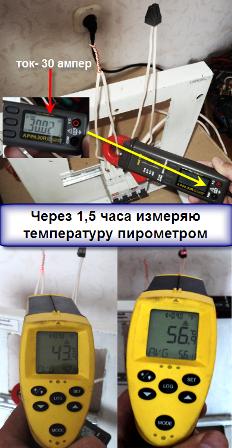
The temperature was measured with a pyrometer and a thermal imager. After 1.5 hours of testing, the temperature at the twist became a maximum of 43.9 degrees, at the wago clamp - 56.9. The difference is small. But she is! While twisting wins.
And I did not even weld the twist - I just twisted the wires tightly and that’s it. I left the wires under this current for another 3.5 hours and the following measurements showed that the temperature did not change.
The next stage - turned on the load with a current of 50 amperes.After 20 minutes, the temperature became 82 degrees at the twist and 96.4 at the Vagovsky clamp. I kept it under this current for three hours, the temperature did not change, the insulation did not melt.
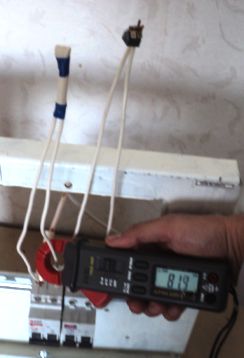
Copper wires withstand twice the permissible current, although they are in the same insulation and are located in the air, that is, they have better heat transfer than that of admissible wires under the plaster. Of course. If the same wires were laid under the plaster, then they would become much stronger.
And finally, I decided to turn on 80 amp wires to finally see - what happens when the current is three times permissible?
And here I saw with my own eyes how the twist withstands current, and the wago clamp from melting began to melt itself and began to swell and bubble up the insulation of the wire, and the melting starts from the Vagovsky clamp!
At the twist, the wire was visible that heats evenly over the entire length from beginning to end.
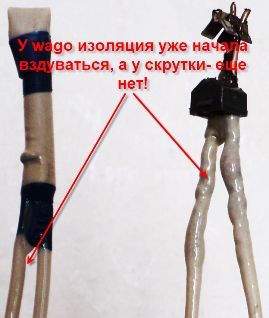
In just two minutes of the test I finished, the insulation on the wires swelled and blackened, we can draw conclusions. Twisting won in all respects! I saw that the transition resistance of the wire connected by twisting is almost zero, but the Vagov clamp has it and much more.
So ardent opponents of twisting have a worthy answer in the dispute between twisting and wago clamps, you do not have to be so categorical and blindly reject what has been used for decades - I'm talking about twisting of course.
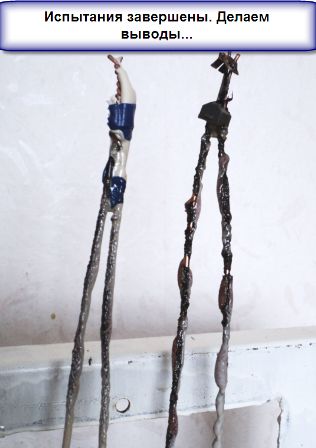
Well, in favor of the Vagovsky clamp, I want to say that it can be used where the current does not exceed the permissible one, and there is also access to service this contact connection.
In the practice of my work, it was when the distribution boxes were completely closed with plasterboard during the repair, of course, there was no way to serve them at the same time ... In this case, I turned off in the distribution boxes with twists with subsequent welding and was 100% sure that nothing would happen to such joints. I do not use any other compounds in such cases.
So the choice is yours, you like speed and convenience - use wago, and if you want a reliable connection - do a twist followed by welding, so reliable!
See also at e.imadeself.com
:
